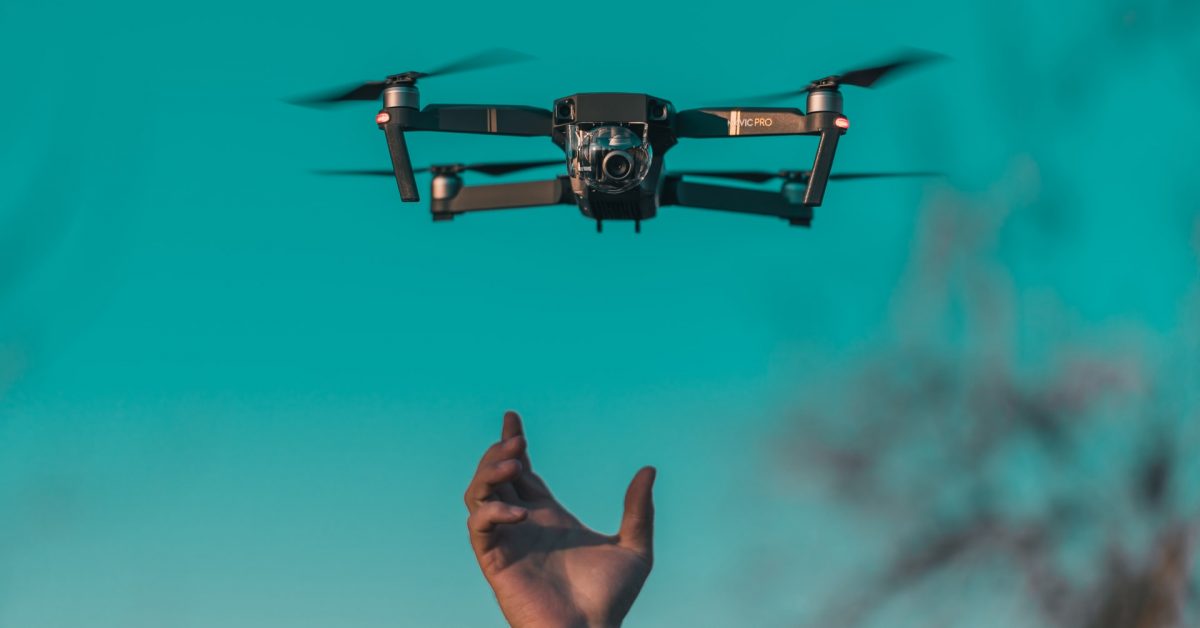Drones are incredible devices that have revolutionised many industries. You’ve probably heard a lot about the benefits and the drawbacks of drones and their capabilities.
Today we hope to eliminate any doubts you may have and resolve the questions you’re probably asking yourself in order to help make your final decision.
Is owning a drone really worth it?
Owning a drone is definitely worth it as a drone can open up vast possibilities. These possibilities range from being capable of capturing stunning aerial footage, to helping increase crop growth in the agricultural industry. It’s important to note that choosing the best drone for your specific needs plays a key role in determining whether a drone is really worth the money.
By the end of this post, you’ll be able to decide whether or not you should buy a drone and you’ll learn how to evaluate if a drone is worth the money invested, or not.
We’ve started by breaking up those who buy drones into two categories, one being the recreational/leisure side of things, and the other being the professional side of things.
Is It Worth Owning A Drone For Hobbyists?
Recreational drones, or consumer drones, are drones that are purchased by people who will use them for fun and won’t be making any money off of them.
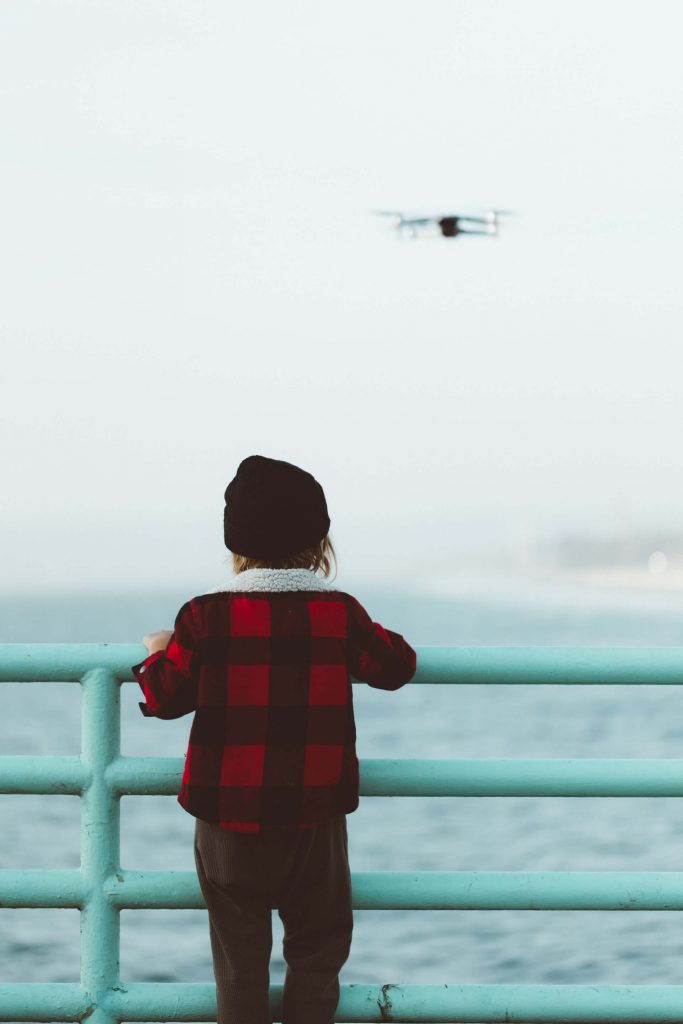
If you’re buying a drone for recreational purposes, you can’t think of it as an investment. You’ll need to remember that this is a luxurious toy, and the money that you spend on it may not ever be returned.
Instead, it will create incredible opportunities for enthusiasts of things like aviation, RC toys and photography or videography.
If you’d like to discover everything you’ll need to know on consumer drones, we have a full post here:
Related Post: What Are Consumer Drones? [Types, Uses, Sizes, Materials And Much More]
Of course, later on you can obtain a commercial drone pilot certificate in order to use your drone to make money, but for now, you won’t be allowed to make money off your drone in any way.
Is It Worth Owning A Drone For Professionals?
Drone pilots are becoming more and more popular as more industries are finding uses for commercial drones. These drones are often high-tech and specialised for certain jobs in agriculture, construction, mining and even law enforcement.
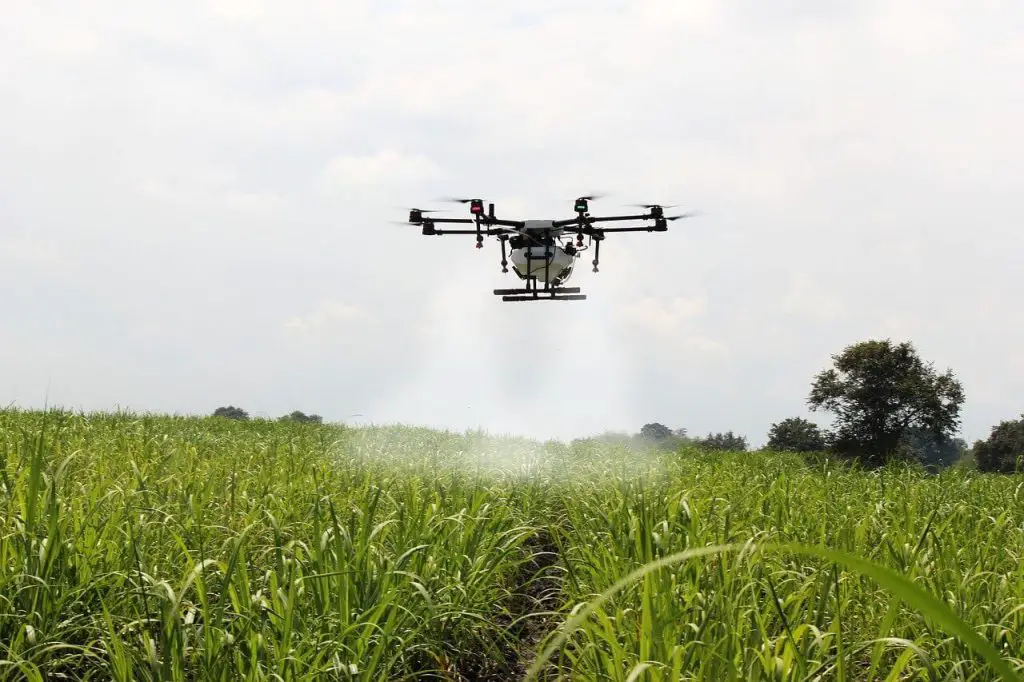
This of course brings up the question:
Is it worth owning a drone for professionals?
It is definitely worth buying a drone if you plan on using it to make a living. The amount of drone pilot jobs is rapidly increasing and will only ever expand seeing the new innovative ways drones are being used in new industries.
Also, using drones can increase profitability of a business in the long run.
Professionals need to evaluate the added value of using a drone, the specifications or capabilities required of the drones to complete the tasks, the costs for employing drone pilots and their maintenance, and the reduction in budget for items no longer needed given the drones take over these tasks.
Furthermore, the innovative ways drones can be used to add to the business offering can increase projected sales. There is a price tag for converting to a business model that integrates drone technology, and this investment should be compensated by the savings in overhead and future increased profits.
Drone professionals should carefully analyse the costs and time to recuperate the investment.
Now let’s dive into several very important questions you need to ask yourself before you choose to convert your business to integrate drone technology or to pursue a career using drones.
Are there enough drone jobs available?
There are many drone pilot jobs available today, and there will be many more popping up in various industries in the future.
One of the biggest industries drones have impacted is the photography/videography industry. This is because of their revolutionary ability to effectively and efficiently break the limit of the sky.
A few examples of drone pilot jobs are:
- Cinematographer
- Farmer
- Law enforcement
- Building inspector
- Wildlife surveyor
- Wedding photographer
- Real estate agent
For more popular examples of drone pilot jobs, check out our detailed post below:
Related Post: 5 Amazing Drone Pilot Jobs You Can Get Today
Are drone pilots in demand?
Drone pilot jobs are most definitely in demand due to the numerous problems drones have solved in various industries.

These solutions are what have been so enticing for industry professionals as they now see the full potential drones can have on day-to-day operations.
For example, drones have been found useful in replacing workers in industries that may carry out dangerous tasks.
Drones can execute tasks at heights that would be fatal to a person in a fall, they can transport hazardous materials avoiding any human exposure to chemicals, and they eliminate the possibility of injuries in driving accidents.
In general drones can increase overall workplace safety. What is the price tag? Some workers are replaced by drone pilots and drone repair technicians, which — if it is worth it to buy the drones — should cost less than the initial total number of workers.
There will be a start up investment in the drones and their maintenance which is compensated over time by the reduction in payroll.
If you’d like to learn a lot more about becoming a drone pilot, we have an entire post which outlines the demand for drone pilots for things such as saving more money, having improved time efficiency and challenges some entry-level drone pilots may face:
Related Post: Are Drone Pilot Jobs Really In Demand?
How much could you make as a drone pilot?
Here is a small table that represents the average yearly earnings of both a beginner drone pilot and an experienced one with a few years of experience.
| Beginner Drone Pilot | Experienced Drone Pilot | |
| Average Yearly Salary Range | $62,000-$70,000 | $73,000-$116,000 |
| Average Hourly Rate | $20,70 | $26,49 |
To learn more on how much drone pilots can realistically make and how drone pilots are being employed, here is a full post on this topic:
Related Post: How Much Can You Make As A Drone Pilot? [Realistic Expectations]
Factors you’ll want to consider before getting a drone
Some drones can be cheap and others expensive. Some individuals don’t have disposable income to buy these luxurious types of products.
If you’re seriously considering buying a drone, these important factors below can help guide you in the right direction, whether that end in you buying a drone or not.
For those that do have plenty of cash to spare, these are still important factors for you to take into consideration.
You may need to register your drone
The Federal Aviation Association (FAA) handles all things related to drone rules and regulations in the United States.
One important rule you cannot overlook is the weight limit of your drone and how that determines whether you need to register your drone or not.
Here’s the rule:
All drones must be registered, except those that weigh 0.55 pounds or less (less than 250 grams) and are flown exclusively under the Exception for Recreational Flyers.
FAA
For those who may find this a little confusing, let’s quickly break it down. This rule is indicating that all drones that weigh under 0.55 pounds (meaning less than 250 grams) don’t need to be registered as these are generally considered to be ‘toy’ drones.
They chose this threshold as these small drones are generally made for indoor use anyways. Drones that were meant to be used indoors can sometimes struggle to be used outdoors due to harsher conditions such as high winds or any bad weather that impairs the drone’s ability to fly correctly.
Related Post: See our post on Indoor drone flying outlines everything you need to know on this topic.
The Exception for Recreational Flyers is referring to anyone that flies their drone for fun without the intention of making money off of it. It’s an exception for drone hobbyists.
If you don’t register your drone, there could be legal consequences as you’d be breaking the rules set by the FAA. We have an entire article on this below:
Related Post: This Is What Happens If You Fail To Register Your Drone In The US
You will need to obtain a drone pilot licence for commercial use
Commercial drone pilots (those trying to make money off of their drones) will need to pass a test in order to obtain their professional drone license.
Different parts of the world have different organisations that handle the rules and regulations, including licencing and pilot certification of drones.
Here are a few of the main organisations depending on country:
- France: European Aviation Safety Agency
- United States: Federal Aviation Association
- United Kingdom: Civil Aviation Authority
It’s important to note that not all countries have the same rules for drones. Some countries require you to register as a drone pilot no matter whether you’re using it for fun or not. Some have different weight requirements that determine whether you need to register the drone itself.
It’s very important to look up your country’s rules and regulations to make sure you’re complying with them.
Consider the purchase you’ll be making
Cheap drones are fun toys to play around with and are great to use to get the hang of flying a drone. These however usually don’t give you the full experience when it come to flying a drone.
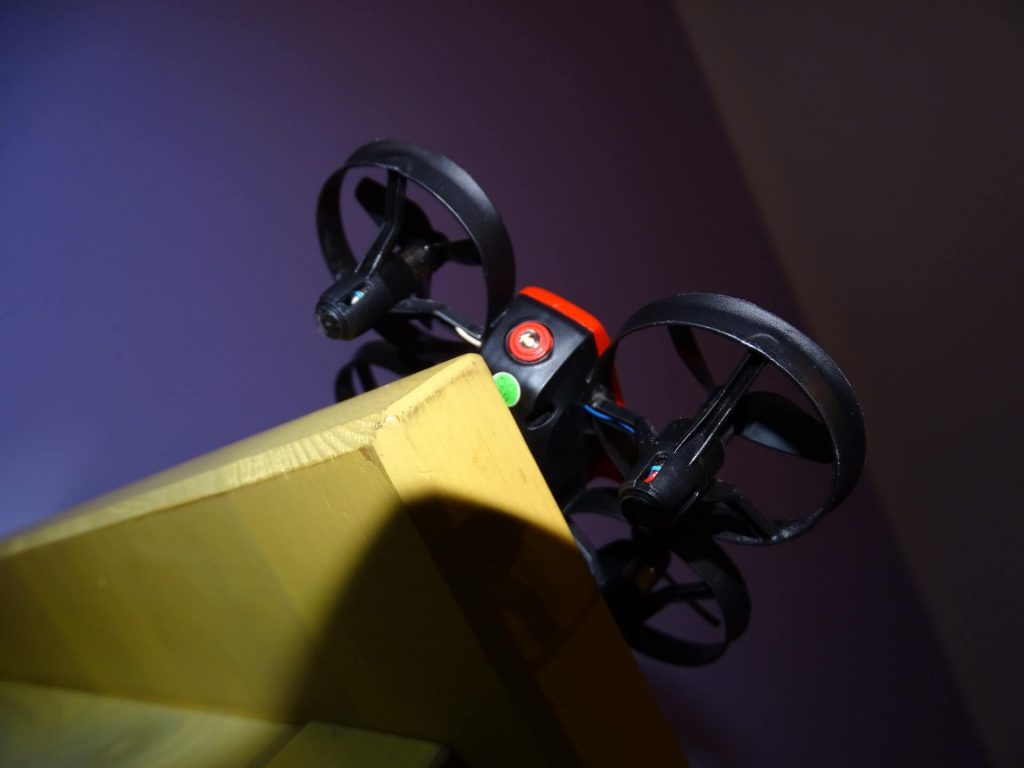
Newer models such as the Ryze Tello, which will only set you back around $100, are packed with advanced technology making them excellent choices to introduce you to the world of drone flying.
To give you an idea of what is considered cheap and what is considered expensive for a drone, a cheap drone is usually priced between $30-$200. Expensive drones fall under the price of about $300 and up for most people.
Cheap drones can have some advanced technology such as hovering stability and important sensors ensuring you don’t accidentally crash your drone.
Expensive drones are usually made of better quality materials and parts making them in most cases easier and safer to use. These drones have a higher durability and resistance to things like bad weather and crashes.
If you’d like a detailed guide on the differences between cheap and expensive drones of any type/design, then we’ve got you covered:
Related Post: Cheap VS Expensive Drones – Everything A Beginner Drone Pilot Should Know
Understand what accessories a drone has
Almost every single drone you buy will have at least one set of a spare part that is most likely going to break. These spare parts are always great to keep on you when you take your drone out to use it.
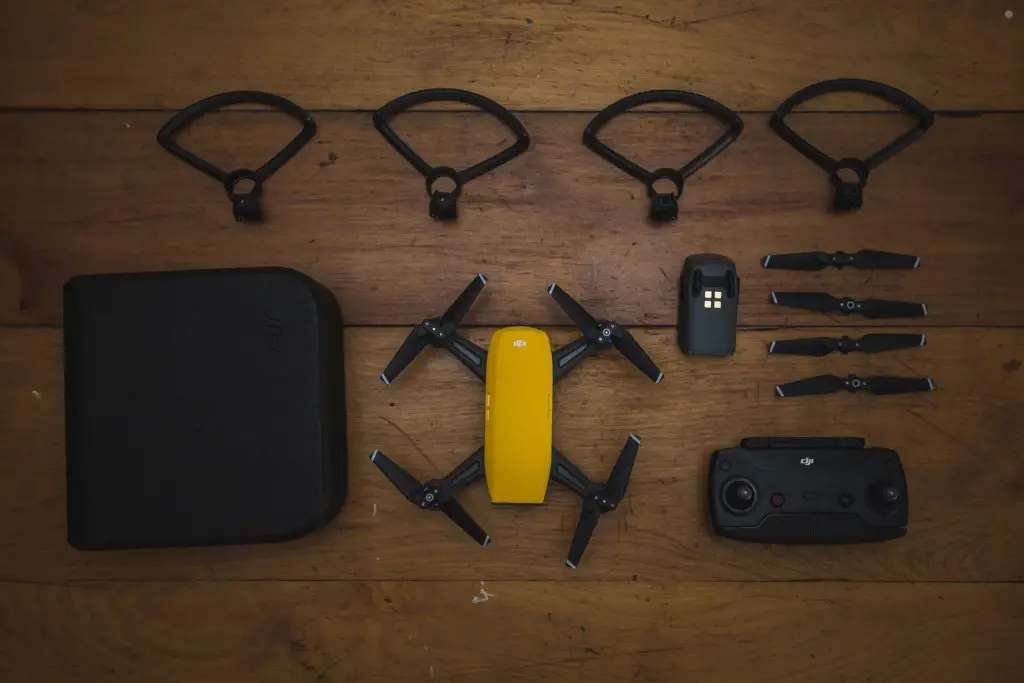
You’ll soon discover that you’ll need a lot more than just a few of some of these spare parts (because accidents happen… a lot of them too).
Here is a small table outlining what you can expect to need to get in terms of spare parts for both cheap and expensive drones and how often you’ll likely need to raplce them:
| Propellers | Extra batteries | Drone carrying case | Micro SD card | Propeller guards | Anti-collision lights | |
| Price range | $15-$40 | $50-$150 | $30-$200 | $10-$60 | $10-$40 | $25-$60 |
| Replacement | Often | Not often | Not often | Often | Often | Not often |
When flying and inevitably crashing a drone, you’ll start to realise just how often you’ll have to replace your drone’s spare parts.
The propellers are the primary accessory you’ll need to replace as not only do they break when you crash your drone, but they can also be worn down over time and bent out of shape.
This reduces the lift created by the propellers and increases the speed the motors will need to run at, therefore reducing the amount of flight time the drone has as it drains the battery quicker.
You may also need anti-collission lights as the navigation lights that are included when you buy a drone are often not bright enough in both daylight and at night.
To help spot your drone at night and increase the distance you can fly your drone while still complying with the line of sight rule from the FAA, you may want to think about purchasing some good quality bright anti-collission lights.
Take note that recreational and commercial drone pilots are legally required to have anti-collision lights if operating their drones at night.
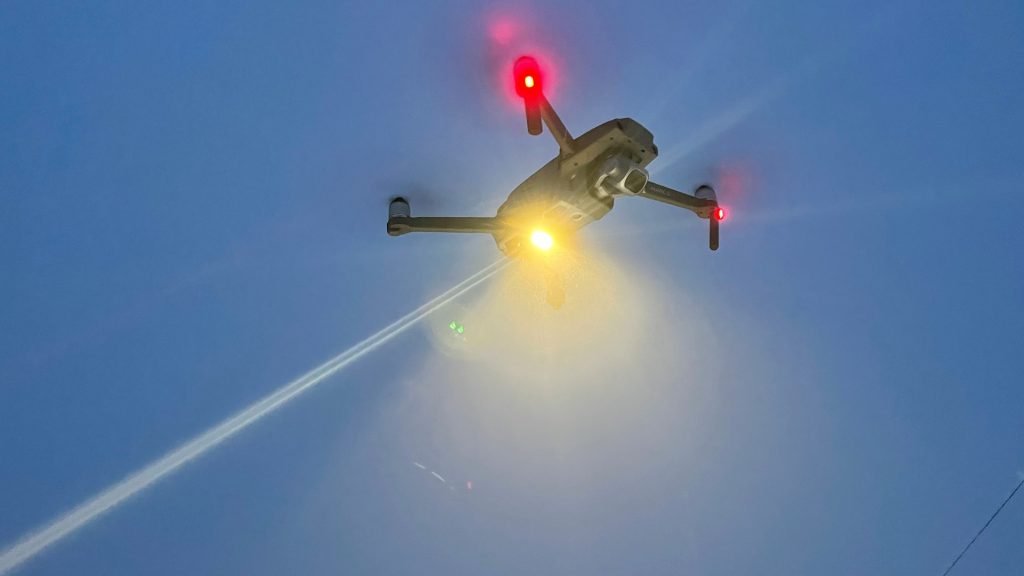
You’ll also want to choose a drone that has a good quality camera and gimbal if your planning on primarily using your drone for aerial photography.
Take note that it is possible to buy a camera and gimbal separately from the drone and attach it at a later date. However, most drones that are of higher quality come with a camera and gimbal integrated on the drone.
It’s also important to add that more popular drones will have parts that will most likely be easier to find.
Don’t worry, if you’ve bought a drone that’s not the most popular, then check the manufacturers website or ask the people you purchased it from to see if they’re also selling spare parts for your specific drone.
Learn about the different sizes drones can come in
Although there are many small drones professionals can use, you may need a much larger drone for the particular industry you’re in.
Here is a brief rundown of the different drone sizes (including military UAV):
- Very small drones
- Small drones
- Medium-size drones
- Large drones
Very small drones are mostly considered classified as ‘toy’ drones although they have been used by the military for reconnaissance.
These drones are referred to as Nano drones and they can weigh as little as 11 grams. They are smaller than the palm of your hand!
Small drones weigh between 200-1000 grams (0.2-1 kg) on average. They can usually fit in your hand and have a lot more features than Nano drones.
They are referred to as Mini drones and are very popular among the consumer and commercial market today such as the DJI Mavic 2 Pro.
Medium-size drones can weigh between 1-600 kg (2.20-1323 pounds). Military medium-size drones fall under the class II (150-600 kg) tactical category.
An example of a popular medium-size drone is the DJI Inspire 2. An example of a class II military drone is the Leonardo AWHERO rotorcraft.
Large drones are essentially the size of small aircraft. These are mostly military unmanned aerial systems (UAVs). These are considered class III (>160 kg) strategic UAVs.
An example is the Northrop Grumman RQ-4 Global Hawk.
Most of the drones except for the large military drones are capable of folding up in order to reduce the amount of space they use when not in use. This can facilitate the ease of transport but in most cases they still remain quite large none the less.
You may need to move around for different jobs or to charge up the scenery and therefore you need to plan how you’ll be transporting your drone.
Having a smaller drone may be more beneficial if you plan on moving around with it a lot and you don’t have much space available in the first place.
Take note that the larger the size of the drone, the heavier it becomes in most cases.
If you’d like to learn more on the different types of drones including the types according to design, payload, range, power source and use cases including some examples of both consumer, commercial and military drones, then check out our full post below:
Related Post: What Types Of Drones Are There? Every Type Of Drone Explained In Detail
Discover what a high quality drone is
Drone manufacturers are constantly experimenting with new materials to use on a drone that’s both strong and lightweight in order to create the most efficient drone possible.
Drones are mostly made of magnesium alloy, aluminum alloy, titanium, carbon fiber and thermoplastics.

You’ll always want to read up on what the drone you plan on purchasing is made of to ensure that it’s not just a cheap drone that’s been priced far too expensive.
Learning the different components of a drone and what they’re made and used for is very important when trying to determine the quality of a drone.
If you’d like to learn more about the materials drones are made of and the different parts/components of a drone, we have a full post below:
Related Post: What Are Drones Made Of? Detailed Guide To Drone Anatomy [Consumer+Commercial]
Know the range a drone can fly from it’s transmitter
Each drone can go so far from it’s transmitter. This is due to the fact that the radio waves that are used to communicate between the drone and the controller can travel certain distances.
A transmitter is essentially any method that you use to control your drone. This can be in the form of a controller and an app on your smartphone.
Knowing the range of a drone is very important if you’re serious about getting a drone. It is also very important when deciding which drone to choose from.
Different drones have different ranges. They range from a few hundred feet to over 7 km (from Nano to medium-size).
Take note that you must always keep your drone within your line on sight. This is an FAA rule put in place to ensure the safety of your drone and the safety of others.
Know the different flight times of a drone
Different drones have different flight times. This is again a very important factor when deciding what drone to buy.
A drone’s flight time depends on the capacity of it’s battery. Most drones nowadays use Lithium-Polymer (LiPo) batteries as they are very light and can hold a lot of power.
A drone’s battery is essentially the life-line of a drone, so make sure the drone has a good battery that has a large capacity and does not weigh much.
Bigger, more expensive drones have longer flight times in most cases.
It’s important to note that not all drones are battery powered. There have been some newer models that are being designed to be solar powered.
There are also already drones out there that are powered by gasoline. This is also outlined in our article on the different types of drones.
Why Owning A Drone Is Worth It
There are many reasons why buying a drone is worth it. The following reasons will include both consumer and professional drone operators.
Some come with incredible software, cameras equipped with gimbals to keep them very stable ensuring incredible photos and videos, high quality materials if buying from reputable manufacturers such as DJI or Parrot to name a few.
Think about what you plan on using your drone for.
It’s also important to note the amount of choices you have when it comes to buying a drone. Don’t think the only choice you have is a drone with four propellers (quadcopter).
There are rotary blade drones which consist of tricopters, quadcopters, hexacopters and octocopters. There are single rotor helicopter drones, fixed-wing drones, hybrid vertical takeoff and landing (VTOL) drones.
Drones are fun!
Although this reason is not very original, it’s still true! Drones are very fun for anyone. You can buy small and cheap toy drones for your kids to play with, you can buy a cheap drone to practice flying as a beginner drone pilot, you can even buy a drone to fly fast!
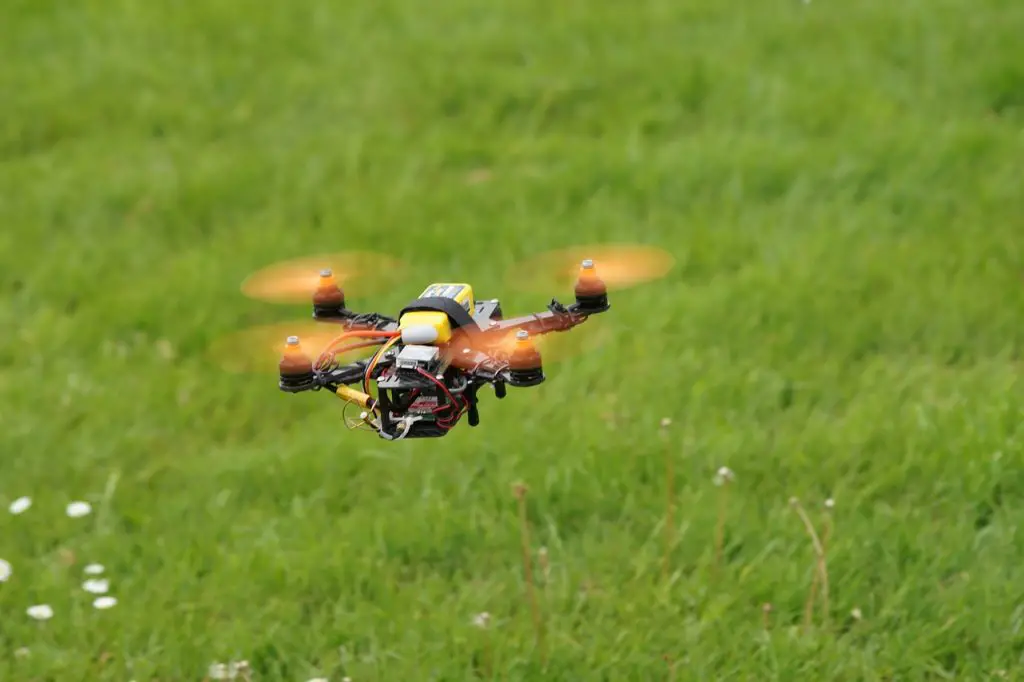
Drones have varying speeds depending on how expensive they are and what they were built for. Different drones have different purposes.
Of course, a lot of them can be used for the same purposes, but some were built specifically for things like speed or stability.
If you’d like to learn more on the speeds different types of drones can go, check out our full post on this topic below:
Related Post: How Fast Can A Drone Fly? An In-Depth Guide To Drone Anatomy
You can take stunning aerial footage with drones
One of the biggest industries drones have revolutionised is the photography industry, or more specifically, aerial photography.
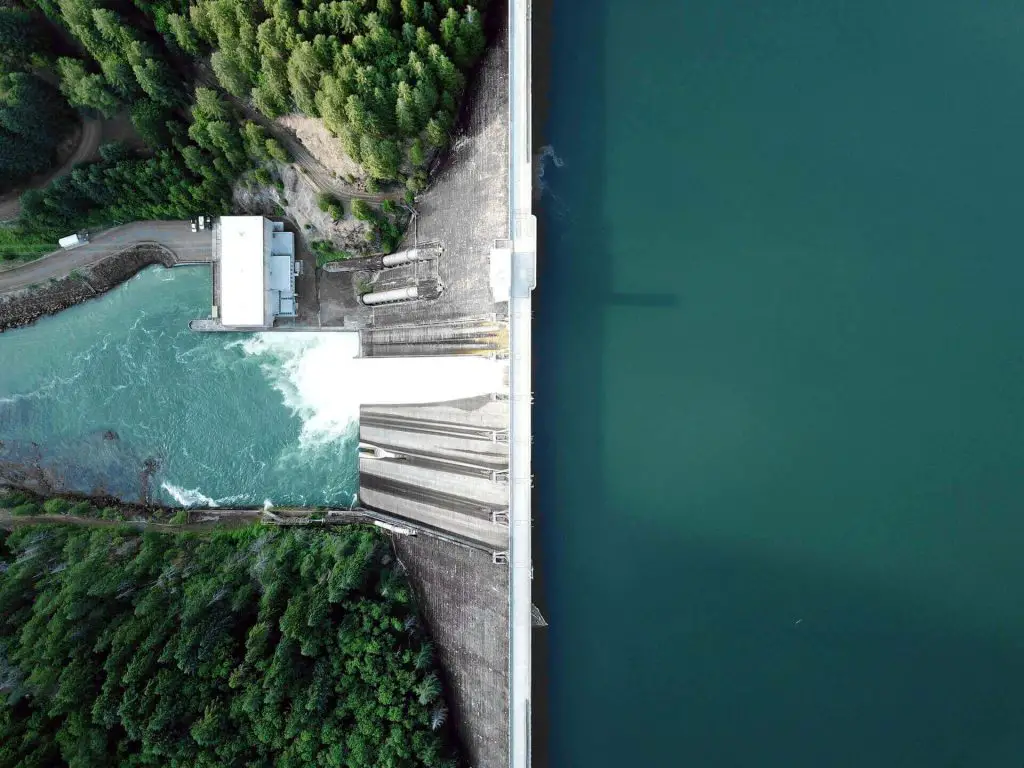
Most drones nowadays, even the ones that cost you as little as $100, have incredible camera quality providing high definition picture and video footage.
Drones provide an easy and cheap way of getting stunning photos and videos 400 feet in the air of your favorite places to visit or even your own home.
Drones have opened up many possibilities when it comes to photography. Even filmmakers see the use in drones and use them very often for scenes that involve shots that would have had to be filmed by renting a helicopter for a few thousand dollars an hour.
Drones are great travel companions
Many of the newer consumer and commercial drones are being built to be portable while still keeping all of their key features.
These drones are easy and quick to deploy in most cases. They are small and compact in order to fit in most spaces available when traveling such as carry-on luggage or in the trunk of your car.
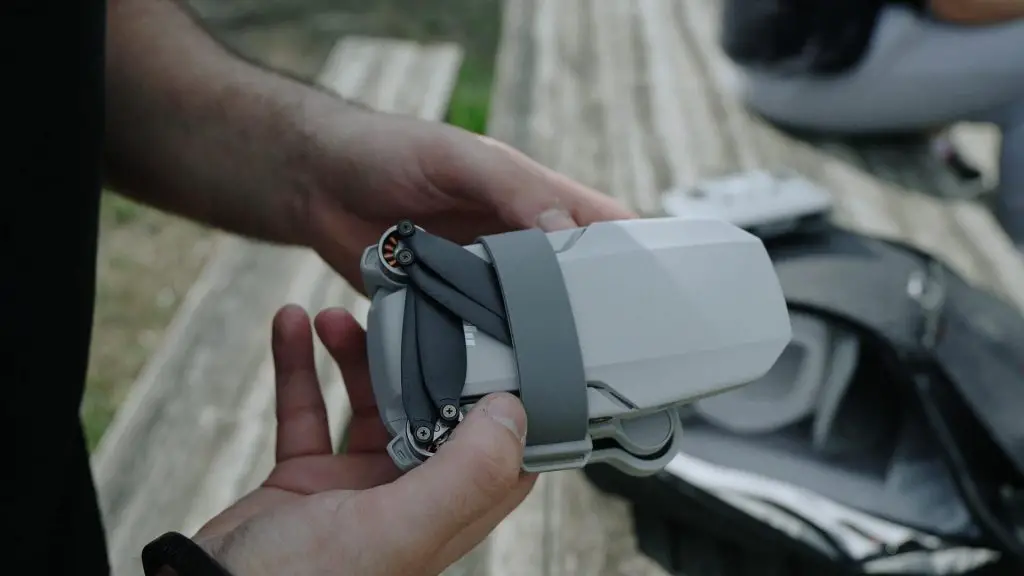
Many models that are in the medium-size drone category are being built to fold easily so as to achieve the goal of being considered compact.
They are also becoming lighter than they used to be so that you can easily and comfortably carry them.
Drone carry cases are not too large and do a very good job at protecting your drone. They can be easily carried with one hand and/or carried on your back.
They are also very durable which gives you plenty of time before you’ll need to buy a new one.
Drones can help you with home improvement projects
Drones can even be used to benefit your own home! You can safely and easily use a small drone to check the condition of your roof.
This is something many people do quite often and in doing so they are forced to climb onto their rooves and possibly fall.
Drones can also be used to plan landscape improvements and house renovations in order to get a general layout of your property.
Many drones have downward facing cameras in order to facilitate this task.
Evolve your photography business with a drone
If you own any sort of photography business, then a drone can be a great way to evolve the way you take pictures.

As we’ve mentioned, aerial photography will become a lot easier and more efficient with the small investment of a few hundred dollars on a drone and the short amount of time needed to learn to fly it and use it’s features.
They will enable you to reach hard to reach angles and capture images of very large areas up to 400 feet in the air!
This can give you a huge edge on your competitors.
You can use them for weddings, public events or simply to capture stunning photos of beautiful landscapes and popular monuments.
Remember, if you’re using your drone for any sort of business related reason or to make money, you’ll need to obtain a commercial drone pilot’s license in order to do it legally.
Why Owning A Drone May Not Be Worth It
There are several reasons why buying a drone may not be worth it in your case.
Drones are awesome, but almost every good thing out there has a bad downside to it.
We personally don’t believe there are that many downsides to drones, but you could argue that the ones we mention below are bad enough as is to completely refrain from buying one.
Now this may be true, but it will mostly depend on the area you live in and your own lifestyle.
Here are some reasons that should be taken into consideration before buying a drone. These reasons are for both consumer and commercial drone pilots.
Not enough free time or training
Some may find that flying a drone is very easy and it comes right to them while others may struggle to get the grasp of it.
No matter who you are, you will most likely make multiple mistakes when flying your drone, especially when it’s your first time.
Getting some training, or simply practicing in your backyard for example, can be very beneficial to you and prepare you for when you decide to start implementing it into your business, or when you decide to travel with your drone to use it in a foreign country.
Not preparing ahead of time and not practicing flying your drone in a safe and familiar place will most likely mean you will inevitably crash it.
This doesn’t mean that you’ll never crash your drone if you do practice and get training and even if you have years of experience as a drone pilot. All we mean is that it will greatly reduce the likelihood that you do.
You may also simply not have enough time to use your drone in the first place.
If you’re very busy and you feel you won’t ever use it, then it may not be the best idea. You could always buy a small cheap drone that you can use when you go on vacation for example.
You don’t have disposable income for replacement parts
As we’ve talked about above, nobody’s perfect. You will most likely crash your drone accidentally at some point.
This means that you’ll have to keep a constant supply of extra parts handy. These parts will most likely be a set of propellers and maybe propeller guards if you choose to use them.
Take note that some choose to buy an extra battery for their drones in order to double the time they have flying their drones at a given time.
If you take a lot of pictures and videos, you may also run out of storage space quite quickly which may be a reason to get several microSD cards for your drone.
Worst case scenario, you’ll be forced to buy an entire new drone, but we doubt this would happen if you limit the amount of risk you put your drone through while you fly it.
All of these parts cost money, and if you know you won’t be able to afford it, then this may not be the best choice.
The many restrictions
You could argue that the main downside of drones is the abundance of restrictions in most countries. We believe that if you use mostly common sense, you’ll never run into any legal issues.
The amount of restrictions will depend on the country, or city, that you live in.
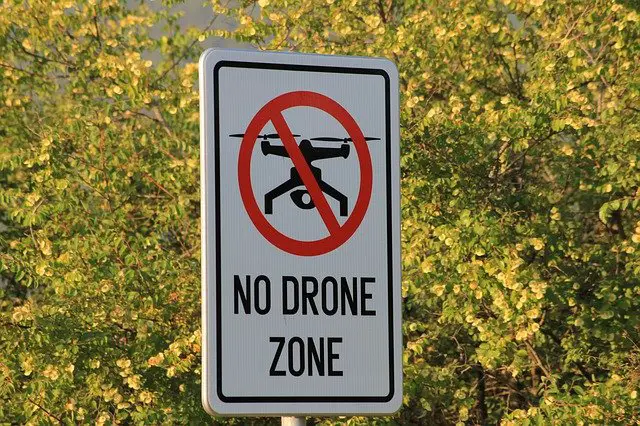
To give you a very serious example, countries like Morocco and Barbados have completely banned drones from the entire country (Barbados has some exceptions).
To give a less serious example, many states have banned drones from being used in national parks in the US.
In most places, drone have been banned from being operated near airports and private areas entirely.
If you have too many restricted areas in your region (cities have a lot), it may be very challenging to find a place to learn to fly, or simply to fly your drone.
Make sure you check for NFZs (no fly zones). You can download apps like Airmap for drones which can help make you aware of surrounding airports and these NFZs.
These apps aren’t perfect and may have some outdated maps, but they’re fairly useful to have.
Most regions will ban you from flying over 400 feet (122m), and from flying over people or highways.
If you hear or see a manned aircraft being operated near your drone, then make sure you land it immediately.
Always keep your drone within your line of sight. If you are using FPV goggles, or a camera found on the controller or simply your phone, make sure you periodically check your drone to see if it’s out of your vision.
If you can’t, then have a friend, or someone in general that can make sure that you haven’t flown too far. Trust us, it’s very easy to break this rule and you’ll want to make sure you don’t.
You may find that there are just too many restrictions in your area and you won’t feel that it’s worth the money. This could be the case, but you can always buy a mini drone like the DJI Spark to easily bring it on your vacations.

Remember, you don’t own the national airspace that you fly in, therefore you should be adhering to the rules that have been set for people like you.
Drones can create stunning photos that create lasting memories you may not have been able to easily obtain without your them.
Conclusion
At the end of the day, you’re the only one who can decide whether it’s worth the money to buy a drone. We hope this article has helped you make a decision. As we’ve explained in this article, we believe that it’s most definitely worth it to buy in a drone!
